What does a wireworm look like and how to get rid of it?

For any gardener, despite the scale of his site and the number of plantings, it is important to protect the future harvest from pests. Among insects, the wireworm is a particular danger. Now it is found almost everywhere, so you should choose in advance a suitable method of struggle.
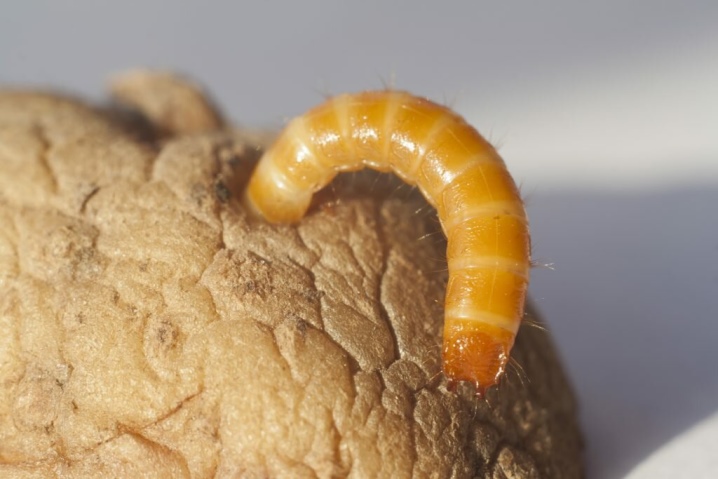
general description
Beetles that make a sound that resembles a click are called clickers. It can be heard when the insect bounces, rolling from back to feet. They are small (up to 2 cm) and shiny black-brown beetles with long whiskers. They can be found both in open areas and in secluded places.
In the spring, each female lays several hundred eggs, from which wireworm larvae subsequently appear. And if in the first year they feed on microorganisms, then by the next spring they turn into gluttonous pests that destroy the roots and buds of plants, as well as damage root crops. At this stage of development, they spend up to five years. During this time, wireworms can do much more damage than Colorado beetles.
As the name suggests, they have a cylindrical and relatively slender body from 1 to 4 cm in length, as well as a head equipped with mandibles and antennae. Another similarity to wire is the hard chitinous cover on the body. Due to these characteristics, insects move freely in the soil and find food. Wireworms range in color from yellow to brown.
After three or five years, the larva burrows into the ground and pupates to develop into an adult.

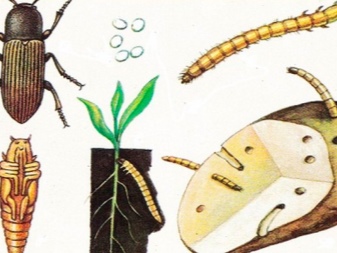
What harm does it do?
Most wireworms are omnivorous, but among them there are both those who feed on vegetation and predators. Some varieties can be found on land planted with a particular crop.
- Wheat, corn and other grains wireworms can destroy seeds, roots and seedlings. The same applies to soybean planting.
- Potatoes, beets, carrots, radishes and other melons damage can be clearly seen on root crops.
- Strawberry roots, bushes and young trees are affected... Flowers (especially bulbs) also need protection.
- The same fate awaits the leek and Clover: In warm weather, wireworms infect young greenery, and then go underground and get to the roots. In the absence of other options, they even destroy weeds.
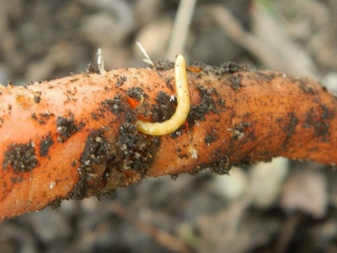
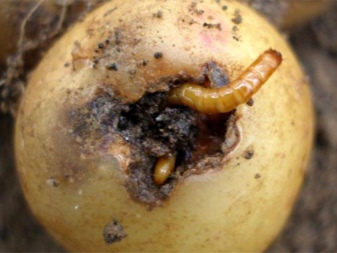
Due to the destruction of some of the seeds, plantings will turn out to be rather rare. But the greatest harm to plants is caused by wireworms in the phase of the appearance of the first pair of leaves. Root damage is fraught with disease, stunted growth and wilting. The earlier the damage was received, the greater the risk of plant death.
Root crops are marked in the form of depressions and passages. Even with good care, such tubers will not be large, they will become poorly stored and will be of little use for food, since most of them will have to be removed during cleaning. The wireworm can even be found in the greenhouse. There he hits cucumbers and tomatoes.
Moreover, their larvae can damage not only the roots. Insects are also quite capable of climbing the stem to flowers and fruits.
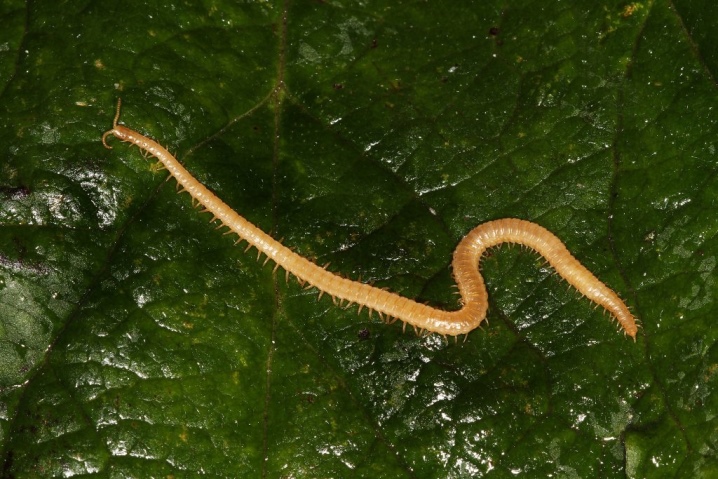
Agrotechnical control methods
There may be several factors indicating that there are nutcracker larvae on the site:
- detection during soil cultivation (due to their bright color, they are clearly visible on the excavated soil);
- rare seedlings (when excavating, you can find damaged seeds);
- wilting of seedlings, poor growth of plants and bushes due to damage to the roots;
- characteristic traces on root crops.
If the fears are confirmed, it is necessary to immediately begin the fight. It is not easy to remove these pests; this requires a set of measures that will be aimed at both destruction and prevention of reappearance. The first step is to select the appropriate agrotechnical means and methods of soil cultivation.

Agrotechnics offers the following methods:
- not plant the same crop in one place for more than two seasons in a row;
- planting plants that prevent the reproduction of the wireworm and at the same time enrich the soil with microelements (for example, mustard, marigolds, calendula);
- to affect the larvae with low temperatures, plowing the site in the fall;
- if possible, loosen the soil around the plants and the aisles in order to raise the eggs to the surface, where they will die under the sun, and the larvae will become food for birds;
- weed the area in a timely manner, remove garden debris;
- liming the soil (you can use dolomite flour or chalk) to reduce acidity and make it less attractive for egg laying and reproduction.
All this applies not only to open ground. In a greenhouse, the same must be done, especially if it is collapsible.
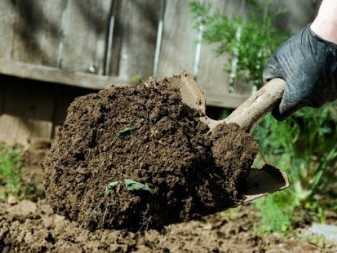
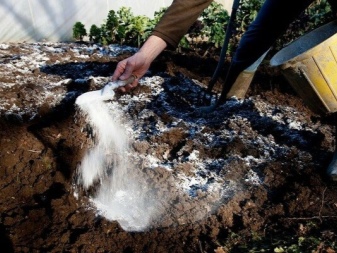
The use of drugs
Many insect control products can be found in stores today. But in order to choose the right one, it is important to know the principle of operation, method of application, advantages and disadvantages.
Chemical
All chemical pest control products are aimed at direct destruction of the insect by poisoning. Such treatment is justified only on large areas or with severe damage. Just a couple of decades ago, hexachlorane-based dust was the most effective against the click beetle. However, at present, it is worth giving preference to less toxic drugs that practically do not accumulate in plants and tubers.
There are safer insecticides today with good wireworm disposal rates
- Diazinon-based preparations. These are Bazudin, Provotox, Pochin, Zemlin, Medvetox. They are dry mixed with earth or dissolved in water. In this case, it is important to observe the dose of the drug, depending on the area of the treated area. They last from 3 weeks to 1.5 months. In this case, not only pests are poisoned, but also beneficial insects, which is why it is so important to follow the instructions on the package.
- "Prestige". Shows good results against both the wireworm and the Colorado potato beetle. They can also process tubers before planting. Aktara has similar properties.
- As a seed dressing agent, you can use "Taboo" or "Prestige". Their additional useful properties are protection against potato diseases and the possibility of using them regardless of weather conditions.
- "Zarit", in addition to affecting the wireworm, it will help to cope with weeds.
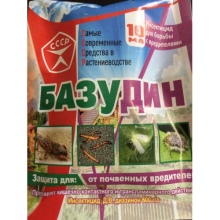
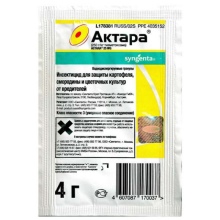
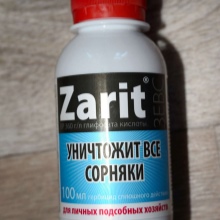
Most of these drugs are prohibited from using in areas where early maturing varieties are planted, since it takes time to remove them from the soil and vegetables.... This is especially true for granules, as they dissolve more slowly.
In addition, you should not use the same product for several seasons due to the possible addiction.
Biological
Since many gardeners are afraid of poisoning pests with chemicals, biologics can be considered as an alternative.
- "Micorad" created on the basis of a special fungus. Parasitizing insects that live in the soil, it causes diseases and their subsequent death.This drug can be mixed with fertilizers, dissolved in water for watering holes, spraying or treating seeds. It does not accumulate in plants, it works in the soil for several seasons and stimulates the growth of productivity.
- "Nemabakt" contains nematode worms and bacteria. Upon contact with the wireworm, the nematode penetrates and destroys it. The drug will not harm human health and will work in soil for about two years.

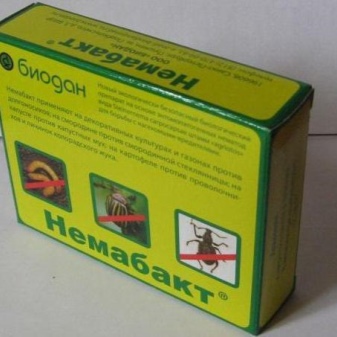
Unlike chemical agents, biological agents are less available due to their high price and special storage conditions. In addition, they begin to act as much as possible after a few months, so you can not count on a quick result.
How to deal with folk remedies?
If it is not possible to purchase drugs in specialized stores, you can use proven means that will also save the harvest.
- Wood ash... It can be added to the ground before digging, or sprinkled in small pits. If we are talking about potatoes, then you can sprinkle the tubers with ashes.
- Onion peel. Available raw materials that you can start collecting in advance. Add directly to the well.
- Mustard... It can be mixed with the previous components.
- Fir branches. It is better to spread them out in the aisles.
- Potassium permanganate... Dissolve four grams in a bucket of water, water in the spring.
- Birch tar... For irrigation, dilute 1 spoon in 5 liters of water, for seed treatment - 1 spoon in a liter.
- Tar soap... It can be rubbed and diluted in water. The solution creates a film that makes it difficult for insects to breathe.


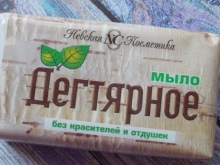
Another equally effective and cheap remedy is herbal infusions. To do this, you can take nettles, dandelions and calendula. The grass is torn into pieces and placed in a container, filling it by two-thirds. Water is added to the top, insisted for three days and used for watering during planting. Celandine and wormwood give a more effective effect, they can be taken three times less.
Herbal infusions are diluted in warm water (at the rate of 1 liter per bucket) and water the plants. At the same time, it is necessary to observe the measure in everything, applying all of the above no more than twice a month.
Folk remedies are available to almost everyone, are cheap and do not contain chemicals, and this is especially important for those who want to get natural vegetables from their garden.
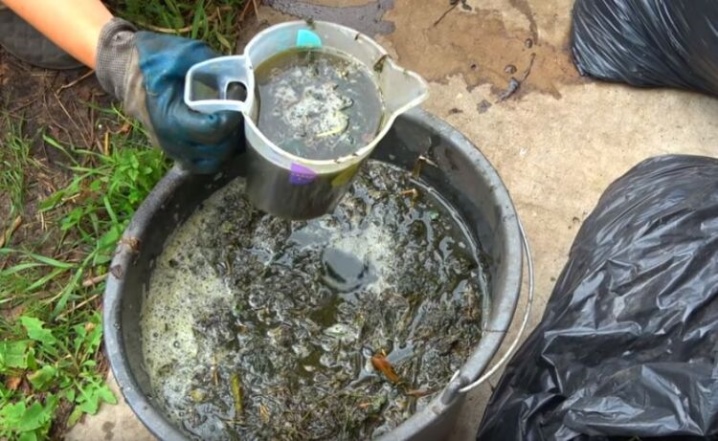
Lures and traps
In addition to the use of various drugs and agricultural methods, during the entire summer season, wireworms can be destroyed by direct physical impact.... Observations in the laboratory have shown that the sense of smell is well developed in the larvae of the clicker. This can be used to set up a few traps. And as a bait, you can use potato or beet tubers cut into pieces.

You can make baits as follows.
- You can simply spread the potatoes on the ground, but it is better to chop them on twigs or skewers, and then place them throughout the territory.
- Place the bait in a container with smooth inner walls, which should be dug into the ground to the brim. You can use cut plastic bottles or jars for this.
- You can bury the bait to a shallow depth by marking the places with pegs or putting it on a string.
- After harvest, plant some potato roots, corn, or lettuce in the area. When the pests become active, remove them along with the plantings.
- Spread out small piles of rotten straw, and after a couple of days, carefully collect and burn them.
All of the above traps must be periodically checked, destroying the collected larvae and changing the bait to a fresh one. Also, pests can be destroyed with boiling water right on the spot.
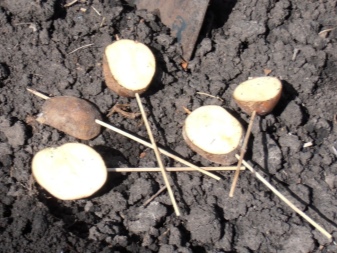

Prevention methods
As you can see, the fight against a wireworm requires a lot of effort and the use of not one, but several methods at once.... And even the efforts made will not always help, since the wireworm goes deep underground. Thus, it will not work to kill absolutely all the larvae and get rid of them forever, you can only achieve a reduction in their number.That's why it is important to take early action against the spread of these pests.
If you plan to bring in soil, you need to make sure that it is not contaminated. To do this, you can dig up a small area in advance to a depth of 30 cm. Or use traps with baits. On a new site in the first year of use, you can sow a crop that the clicker larvae do not like.
In addition, green manure helps to increase soil fertility. The same can be done for the land to rest and replenish its resources.

If the climate permits, vegetables should be planted as early as possible, while the new larvae have not yet grown and the existing ones have not become active. In cold weather, the wireworm goes deeper, it will not be able to damage young seedlings and roots. The same advantage can be used by planting winter crops. They will get stronger before the onset of cold weather and will grow more intensively in the spring.
In the fall, the site must be cleaned, and this applies not only to greenery, but also to the roots that remain in the ground. It is better to dig the soil onto the bayonet of a shovel. If you have time in time, before the pests go deeper, some of them can be removed directly during digging, because they look pretty noticeable. All these measures lead to the fact that the beetle reproduces in smaller numbers.
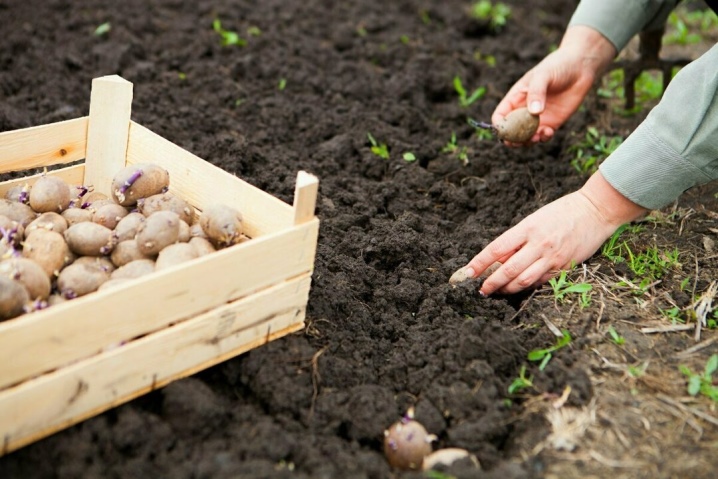













The comment was sent successfully.